Late Season Soybean Nutrient Deficiency Identification
June 27, 2023
- In many corn/soybean rotations, the fertility needs of soybeans—except for nitrogen (N)—are provided as a residual from corn fertilization programs. The increase in soybean yield potential has led to more of an interest by farmers in providing nutrients to the soybean crop directly instead of relying on residual nutrients from the corn production year.
- Nitrogen, phosphorus (P), and potassium (K) are considered essential nutrients, as each soybean bushel (60 lb, 27.2 kg) produced removes an estimated 4.2 lb (1.9 kg), 0.4 lb (1.8 kg), and 1.25 lb (0.57 kg) of N, P, and K, respectively.1
- Calcium (Ca), magnesium (Mg), and sulfur (S) are secondary nutrients for soybean. Soybean has lower overall crop requirements for secondary nutrients than essential nutrients. Soybean use of the secondary nutrients is estimated at 0.2 lb (0.9 kg), 0.23 lb (1.04 kg), and 0.20 lb (1 kg) per bushel for Ca, Mg, and S, respectively.1
- Micronutrients—boron (B), copper (Cu), iron (Fe), manganese (Mn), molybdenum (Mo), and zinc (Zn)—are nutrients that are needed in relatively small amounts. Of the micronutrients, Fe and Mn are the most important for soybean production.
- Maintaining soil pH is critical for maximizing yield potential. Soil pH for a soybean crop should be maintained between 5.5 and 7.0 to help ensure the availability of fertilizer nutrients. Acidic soils with a pH lower than 5.5 may be treated with lime to achieve the desired pH, while basic soils with a pH above 7 may be treated with elemental sulfur. Should soil pH fall below 5.5, soybean’s ability to fix N can be reduced.
- In general, noticeable fertility deficiencies in soybean are rare. Awareness of nutrient deficiency symptoms can help in distinguishing them from symptoms of foliar diseases, herbicide injury, sun scald, and other stresses.
Deficiency Symptoms of Essential Nutrients
Nitrogen-deficient soybean plants appear pale green to yellow (Figure 1). Late season deficiencies can be caused by several factors that impact the ability of the plant to fix N, such as:
- Wet and compacted soils
- Saline or calcareous soils
- Drought
- Soils with less than 1.5% organic matter
- Reduced numbers of nitrogen-fixing Rhizobia bacteria caused by low soil pH
Nitrogen uptake is greatest from the onset of flowering to pod fill. Should a deficiency exist, and if irrigation is possible, an application of 20 to 40 lb/acre (24.7 to 44.5 kg/hectare) of N at the R3 growth stage may be considered.2 Another study found that while soybean did respond to additional N applications, such applications may only be cost effective in high-yield environments.3
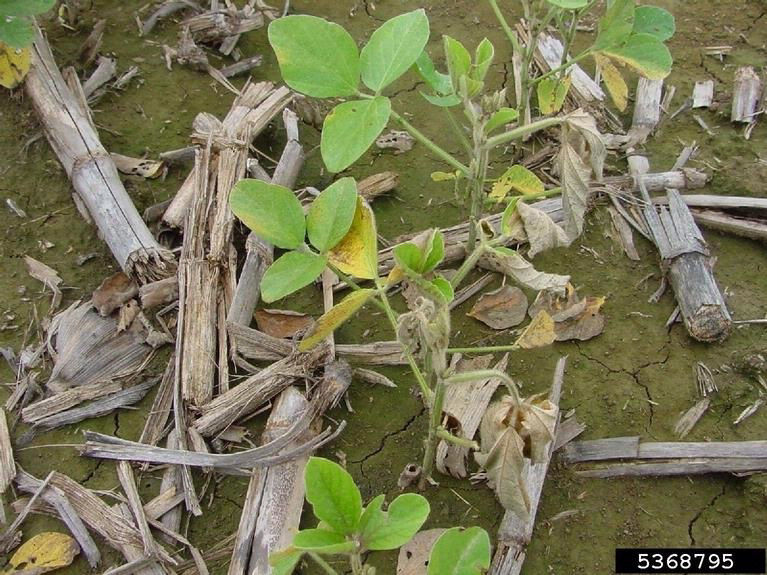
Phosphorus-deficient plants may appear stunted, have small leaves, and may have interveinal reddening on lower leaves (Figure 2). Because P is mobile within the plant, symptoms are generally more severe on lower leaves. If a leaf tissue analysis of the newest leaves at the R2 growth stage reveals a P concentration of less than 0.25%, the plants may be phosphorus deficient. Phosphorus concentrations of 0.25 to 0.30% should be considered low.4 There is limited information to support the use of additional P during pod set to offset deficiencies.
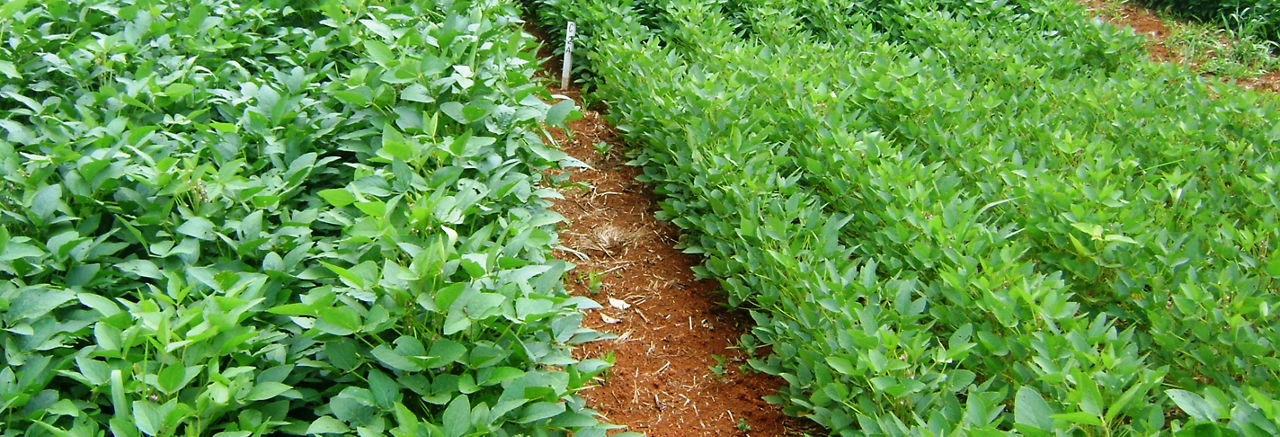
Potassium deficiency appears first on the oldest leaves as a yellowing of outer leaf margins (Figure 3). Since K is mobile within the plant, symptoms can appear throughout the plant. Potassium moves to the roots by diffusion from the soil solution. As such, drought can predispose soybean to potassium deficiency. A leaf tissue test finding a K concentration of less than 1.5% at R1 to R2 growth indicates K deficiency, 1.5 to 1.8% should be considered as low, and greater than 1.8% is sufficient to help maximize yield.4 If K deficiencies are noted before the R5 growth stage, K fertilizer may be applied and watered in with irrigation or rainfall.4 Foliar applications may be justified under rainfall production systems when nutrient-deficiency symptoms are obvious, with confirmed K-deficient soil tests, or when soil or climatic factors (other than drought) limit nutrient uptake in late spring and early summer.
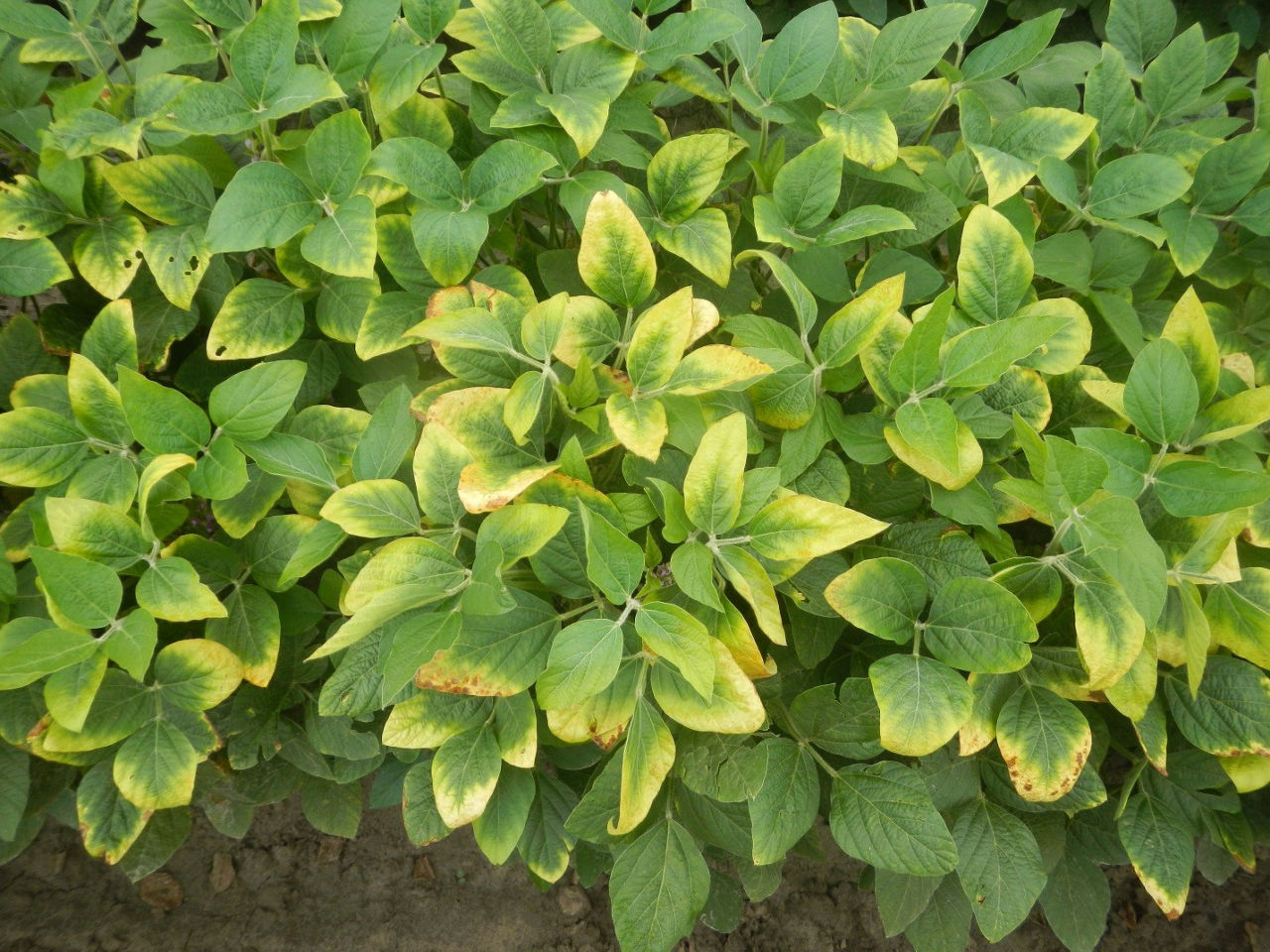
Deficiency Symptoms of Secondary Nutrients
Calcium is important for cell wall development, the transportation of other nutrients, plant strength, and for potentially counteracting the effects of alkali salts and organic acids in the plant. A balance of Ca, Mg, and K needs to be maintained within the plant, or the plant may become deficient in one or two of these nutrients. The newest soybean leaves appear necrotic if a Ca deficiency occurs (Figure 4).
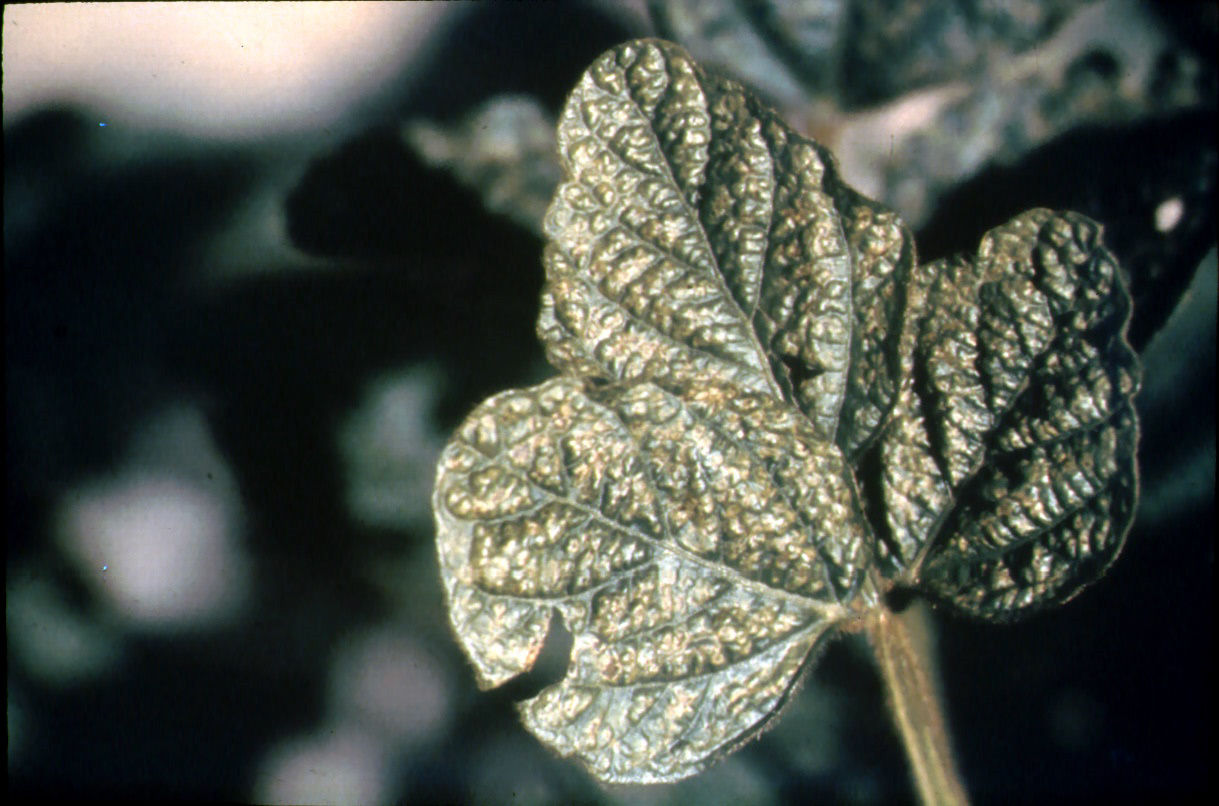
Magnesium is a much-needed nutrient in soybean as it plays an important role in photosynthesis, starch production, leaf and root growth, carbon fixation, maturation uniformity, and uptake of P.5. Magnesium deficiency is mostly observed on very acidic soils (below pH 5.5) which usually have textures of sandy loam, loamy sand, or sand. High levels of K, ammonium (NH4), or Ca can cause Mg deficiency. Deficiency symptoms appear first on older leaves and include pale-green leaves with interveinal yellowing (Figure 5).
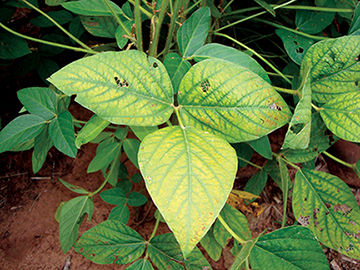
Sulfur is an essential element for the formation of proteins. When S is deficient, soybean growth is reduced, maturity is delayed, protein formation is reduced, and foliage becomes pale green to yellow with non-prominent veins (Figure 6). Sustained deficiencies can result in leaves becoming pale brown to bronze.

Deficiency Symptoms of Micronutrients
Boron is necessary for nodulation, as it accelerates atmospheric N fixation. Deficiency appears as yellowed leaves with curled leaf tips, interveinal chlorosis, tip dieback, and stunted roots (Figure 7). Flowering can stop under severe deficiency conditions.
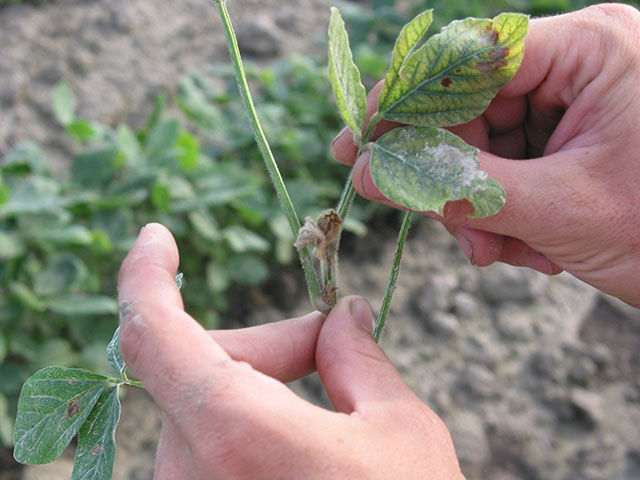
Copper is necessary for plant enzymatic activities, chlorophyll production, and seed development. The element is generally immobile in plants; therefore, deficiency symptoms appear first in younger plant tissues. Most Midwest soils supply adequate amounts of Cu for crop production. However, deficiencies can occur on organic soils, sandy-textured soils, soils with increased amounts of oxides and carbonates, and soils with a pH of 7.5 or greater. A deficiency of Cu can lead to increased susceptibility to diseases. Deficiency symptoms include reduced nodulation and N fixation, delayed flowering and maturation, pollen sterility, necrosis of leaf tips and stems, and yellowing of leaves.
Iron is needed for chlorophyll synthesis in all crops, and for nodule formation in soybean. High levels of manganese can induce Fe deficiencies and vice versa. Iron deficiency is common in soils with pH above 7.0 and soils with high sodium (Na) and Ca content, which is common in western states. Deficiency symptoms include yellowing between the veins of the newest leaves, reduced nodulation, and reduced nitrogen fixation (Figure 8). The symptoms are generally referred to as iron deficiency chlorosis (IDC).
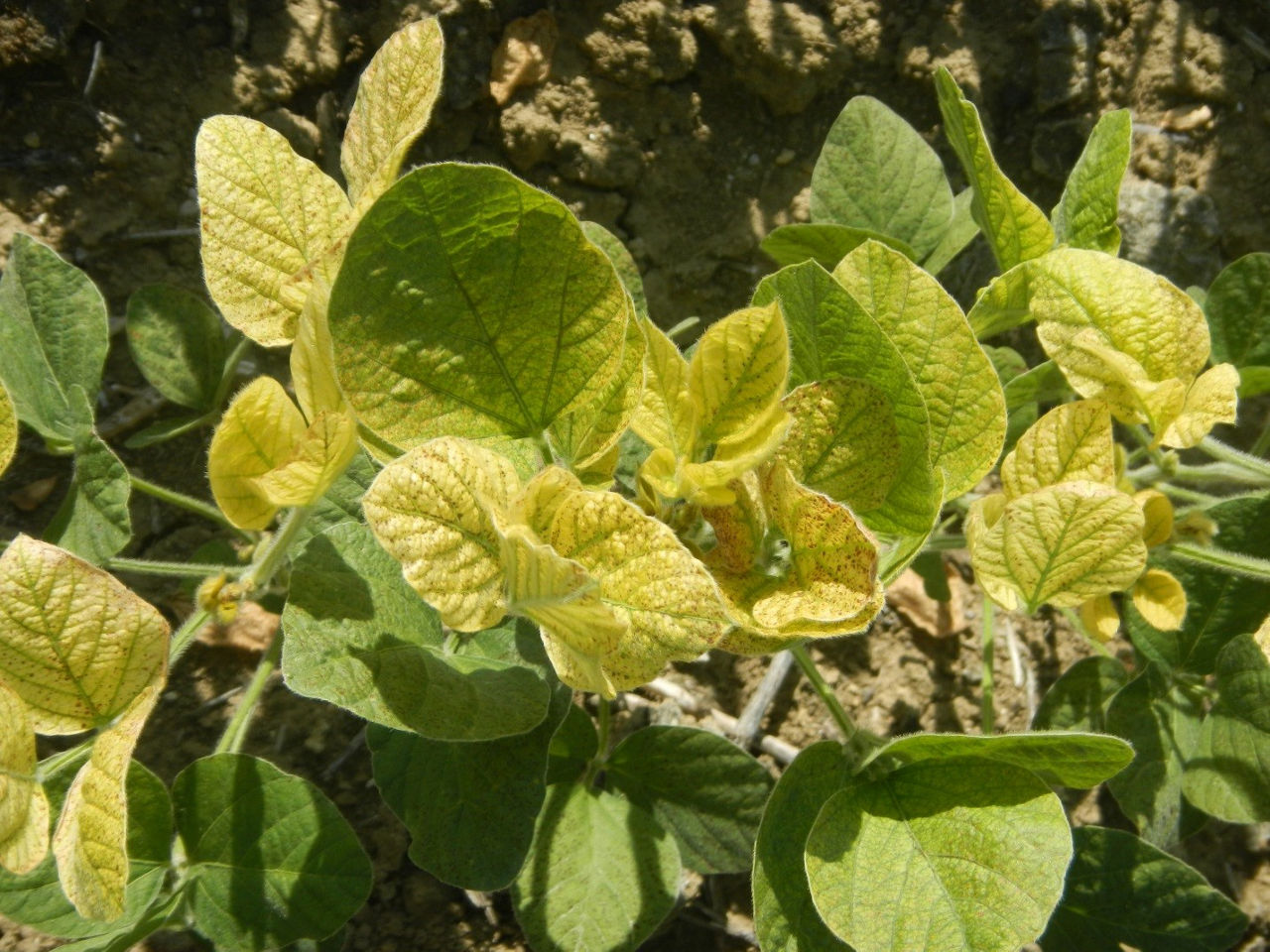
Manganese plays a vital role in photosynthesis through chloroplast formation, chlorophyll development, and the development of carbohydrates. Mn also influences enzyme activity. Manganese-deficiency symptoms include interveinal yellowing with veins remaining dark. Symptoms resemble Fe deficiency; however, Mn deficiency appears across the whole plant (Figure 9). Mn deficiency is very common in soils with pH levels above 5.8, and especially in old lake bed or glacial out-wash soils having pH levels above 6.5. The most economical and effective method for correcting manganese deficiency is foliar applications of manganese sulfate at 1 to 2 lb/acre (1.1 to 2.2 kg/hectare) of actual manganese. Apply 1 lb/acre (1.1 kg/hectare) of actual manganese when the first deficiency symptoms appear, when plants reach 6 in or 15 cm tall, and apply another pound per acre (1.1 kg/hectare) in 10 days if deficiency symptoms reappear.
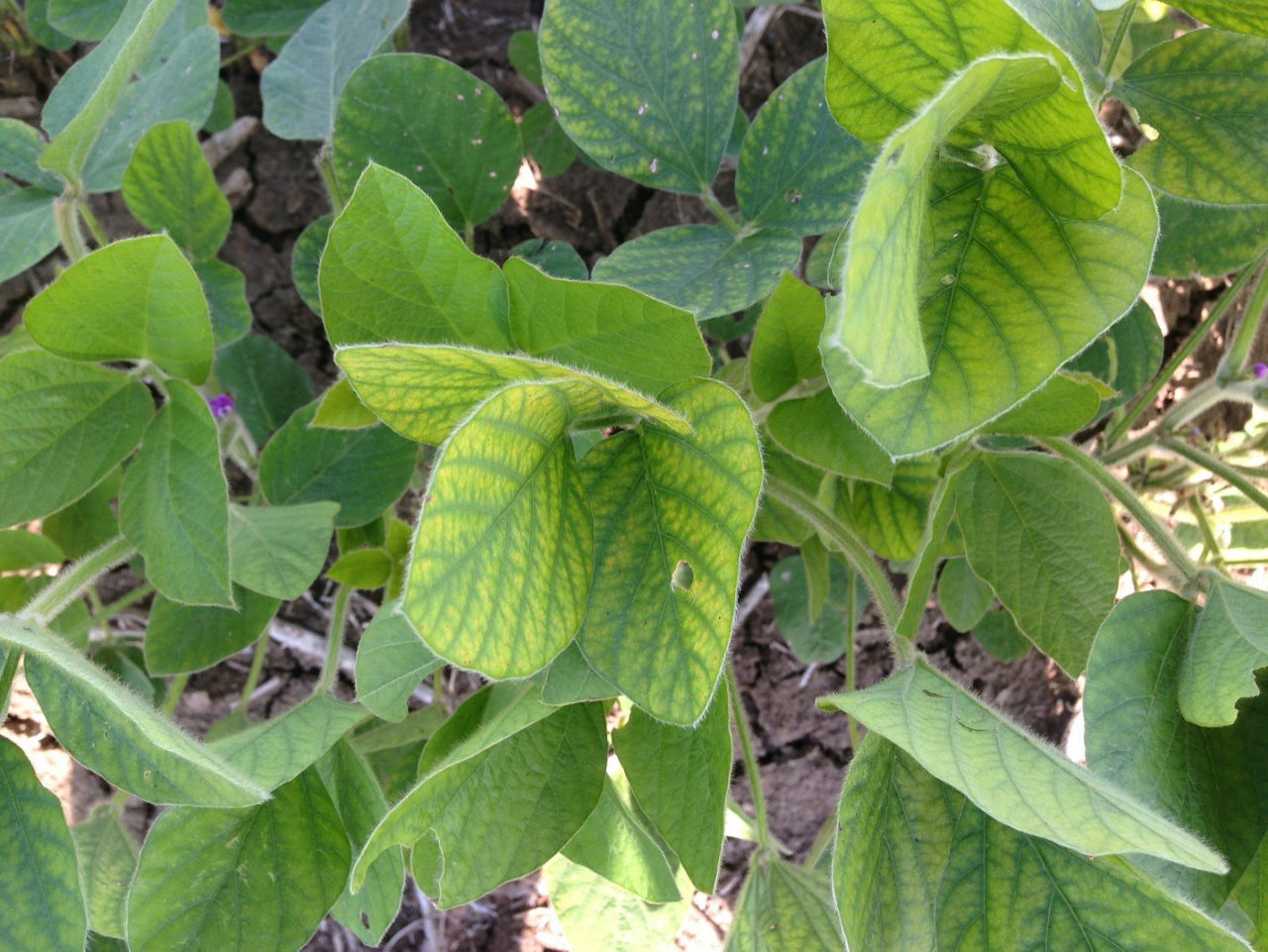
Molybdenum is vital for both N fixation and nitrate reduction processes. Molybdenum deficiencies in soybean are very rare. If a deficiency occurs, plants have the same light-green appearance associated with N deficiency, because the plants have few or no N-producing nodules.4
Zinc is necessary for the development of carbohydrates, proteins, and chlorophyll. Soils lacking Zn can reduce plant growth and yield potential. Symptoms are more apparent when soil temperatures are cool, and in soils that are fine-textured, sandy, of low organic matter content, eroded, or under fallow syndrome situations. Soils with high phosphate concentrations may result in soybean plants that exhibit Zn deficiencies. Deficiency symptoms include interveinal mottling or chlorosis (Figure 10). Symptoms of zinc deficiency can be confused with symptoms of iron deficiency.
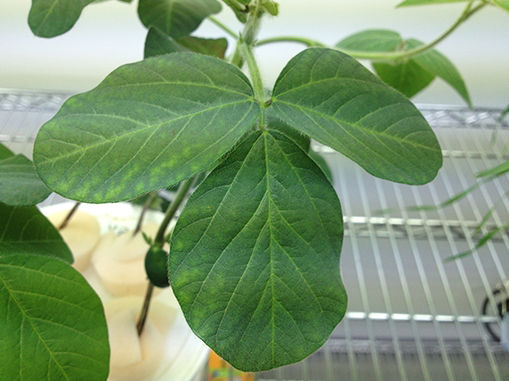
Sources
1 Soybean nutrition requirements. Integrated Crop Management. Iowa State University. https://crops.extension.iastate.edu/.
2 Wortmann, C.S., Krienke, B.T., Ferguson, R.B., and Maharjan, B. 2018. Fertilizer recommendations for soybean. G859. NebGuide. https://extensionpublications.unl.edu/assets/html/g859/build/g859.htm
3 La Menza, N., Grassini, P., Specht, J., Rees, J., Timmerman, A., Whitney, T., and Glewen, K. 2018. Is soybean yield limited by nitrogen supply? University of Nebraska. https://cropwatch.unl.edu/2018/soybean-yield-limited-nitrogen-supply#:~:text=Soybean%20has%20a%20large%20nitrogen,240%20lbs%20N%20per%20acre
4 Slaton, N., Roberts, T., and Ross, J. 2013. Fertilization and liming practices. Arkansas Soybean Production Handbook. Chapter 5. University of Arkansas.
5 Smith, D. 2016. Magnesium magic. Nutrient Navigator. AGWEB. https://www.agweb.com/.
1313_142344